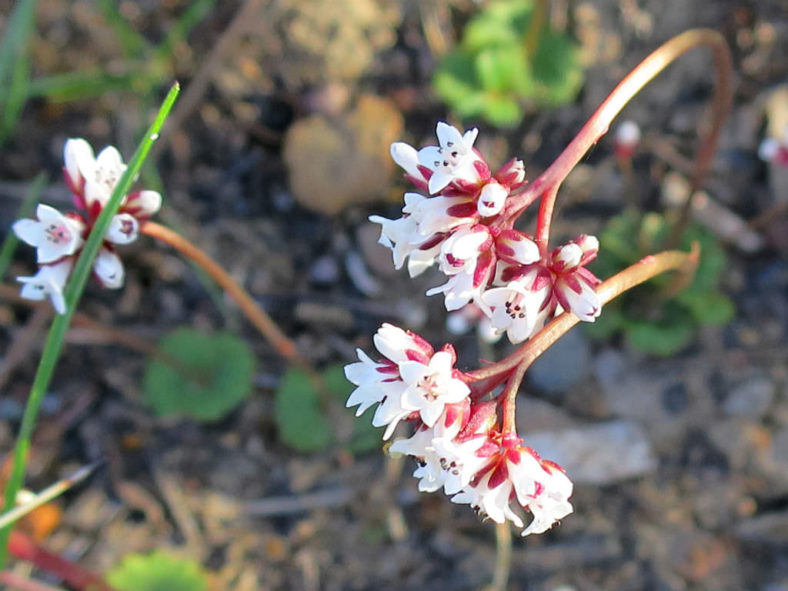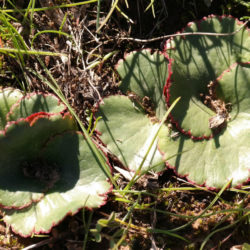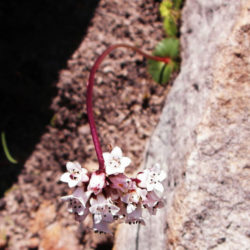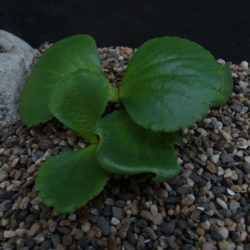Scientific Name
Crassula saxifraga Harv.
Synonym(s)
Septas globifera, Septas saxifraga
Scientific Classification
Family: Crassulaceae
Subfamily: Crassuloideae
Genus: Crassula
Description
Crassula saxifraga is a tuberous geophyte with erect, unbranched stems that grow from one to several tubers, reaching up to 6 inches (15 cm) in height. The leaves are arranged in one to two pairs and are usually produced after flowering but sometimes can be found at the same time as the flowers. They are flat, slightly fleshy, green or sometimes purplish below, and broadly obovate with scalloped margins, measuring up to 2 inches (5 cm) long and 4.8 inches (12 cm) wide.
From fall to mid-winter, the plant produces flowers in terminal clusters on stalks that can reach up to 6 inches (25 cm) in length. The flowers are 5-merous, tubular with lobes slightly recurved at the apex, white, often tinged pink.
Origin
Crassula saxifraga is native to South Africa. It grows in rock crevices and stony slopes in the Northern Cape, Western Cape, and Eastern Cape province.

Hardiness
USDA hardiness zone 10b to 11b: from 35 °F (+1.7 °C) to 50 °F (+10 °C).
How to Grow and Care
Crassulas are easy to grow but susceptible to mealy bugs and fungal diseases. Overwatering is sure to be fatal, as with all succulents, so err on the side of too dry rather than too wet. Never let your Crassula sit in water. If you water from beneath by letting the plant sit in a saucer of water, ensure to pour off any excess water after a few minutes.
Crassulas are generally started by division, offsets, or leaf cuttings. Plants can be easily propagated from a single leaf: sprout leaves by placing them into a succulent or cacti mix, then covering the dish until they sprout.
Repot as needed, preferably during the warm season. To repot a succulent, ensure the soil is dry before repotting, then gently remove the pot. Knock away the old soil from the roots, removing any rotted or dead roots. Treat any cuts with a fungicide. Place the plant in its new pot and backfill it with potting soil, spreading the roots as you repot. Leave the plant dry for a week or so, then begin to water lightly to reduce the risk of root rot.
See more at How to Grow and Care for Crassula.
Links
- Back to genus Crassula
- Succupedia: Browse succulents by Scientific Name, Common Name, Genus, Family, USDA Hardiness Zone, Origin, or cacti by Genus
Photo Gallery
Click on a photo to see a larger version.


